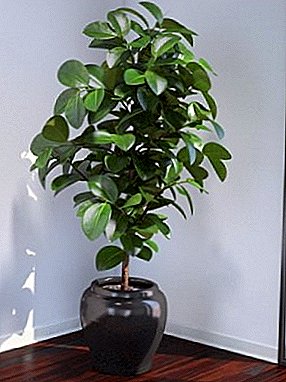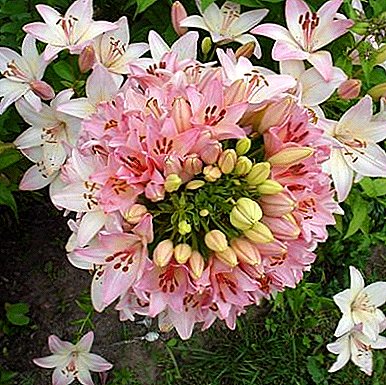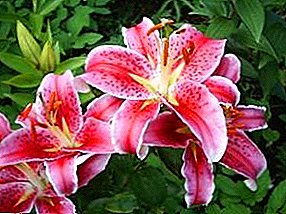
There is one amazing tree in the world, which by its appearance causes mythical thrill in people who are close to it.
And some local ethnic groups even worship him as a creature equal to gods.
And he has his own name - Great banyan
This name was called cyclopic Bengali ficus, which is already more than 200 years grows in faraway India and "covers" its crown area in 15 square meters km!
But people learned to grow small “copies” of the Great Banyan, so that every connoisseur of unusual beauty could admire the room counterparts of the giant ficus reduced many times.
Plant origin
Ficus benghalensis belongs to the mulberry family. He comes from the tropical jungles of India, Thailand, Burma, southern China.
Its second name - banyan - means the form of life, when a single plant, due to the special abilities of its aerial roots and shoots, takes on the appearance of an entire grove.
Numerous trunks in such a "forest" are just parts of a single ecosystem of the Bengal ficus.
Over time, it will grow in breadth and high, capturing vast territories.
Growth continues endlessly, and all new and new roots, rushing from the upper shoots to the ground, take root in the soil and give fresh "trees".
Of course, at home it is almost impossible to repeat this miracle.
Those who still decide on such a feat will have to be patient and have a large room in which it will be necessary to create an atmosphere of the tropics.
However, many enthusiasts successfully grow in their homes table "banyanchiki", which is often called the bonsai culture.
What is banyan?
The authors of this term are Europeans. When Portuguese and English Travelers in the XV-XVI centuries. described the wonders of the fairyland of India they had discovered, they drew attention to the unusual trees that served as a kind of roof for local bazaars and other mass gatherings of local residents.
Of course, under the shadow of such a giant, the word “baniya” often sounded, which in Gujarati language means “merchant, trader”.
Without thinking twice, the Europeans "rewarded" the tree itself with this word.
So the Bengal ficus became a "merchant tree".
A photo
In the photo ficus "Belgian":






Home care
It is difficult to overestimate the decorative value of the Bengal ficus.
But although he is very beautiful and caring for him does not seem to be too complicated, those who decide to grow this species will have to find a well-lit, spacious room. (the ficus can grow as 40 cm, and up to 3 m up)in which constant warmth will be guaranteed (18-26 ° C), high humidity and lack of drafts.
Feed ficus 1-2 times per month. For this they recommend using universal granular fertilizers.
Watering
 This plant needs regular watering with soft water, regardless of the season.
This plant needs regular watering with soft water, regardless of the season.
Should be watered when the top layer of soil dries 2-3 cm deep.
To maintain proper humidity, it is better not to spray the entire tree, but gently wipe the leaves with a soft wet cloth.
At the same time you clean the foliage from the accumulated dust.
Despite the beautiful legends that hover around the ficus-banyan, those who are engaged in indoor breeding of this tree will not be able to admire its flowers.
For one simple reason - the indoor counterparts of tropical giants do not bloom.
A chance to see a kind of "classic" inflorescences - small spherical formations of syconia, similar to berries - only those gardeners who grow Ficus Bengal grow in a greenhouse.
Crown formation
But the lack of flowers more than compensates for the crown of this plant, which grows magnificently in all directions.
However, the process of development of the treetops cannot be allowed to take its course.
First of all, you need to regularly rotate the tree around its axis - so the crown will develop evenly and get enough sunlight.
Secondly, it is necessary to conduct regular pruning of the branches, so that it is possible to give the crown with its "velvet" leaves a certain shape and compact dimensions.
Priming
For the normal development of ficus will need a special ground.
The plant loves fertile soils, slightly acidic or chemically neutral.
Already ready soil for ficus can be bought on the market or in a specialized store.
But you can cook yourself by mixing sod, peat and leafy soil and sand.
The indoor will grow well if there is a drainage layer on the bottom of the pot.
Breeding
 Starting the cultivation of home banyan, we must bear in mind that the Bengal ficus usually propagates by cuttings,
Starting the cultivation of home banyan, we must bear in mind that the Bengal ficus usually propagates by cuttings,
which for normal rooting need a mixture of sand and peat.
But in order to propagate this culture from seeds, it will take a lot of experience in breeding such crops.
Transfer
At a young age, the ficus should be replanted annually in pots of large diameter.
For adults, it is sufficient to replace the topsoil with fresh soil.
Benefit and harm
This plant cleans the atmosphere well inside the room.
Ficus is not toxic. Moreover, it perfectly absorbs some substances harmful to humans (phenol, trichlorethylene, benzene), using them for its nutrition.
At the same time, the plant throws active substances into the air, elevating mood and working capacity, normalizing sleep.
Diseases and pests
Most often, the pests, to the delight of flower growers, bypass the ficus of Bengal.
 But sometimes he is attacked by a mealybug, a spider mite, a scythe.
But sometimes he is attacked by a mealybug, a spider mite, a scythe.
In this case, the diseased plant must arrange a warm shower or wash it with a cloth, followed by chemical treatment.
It is also necessary to monitor the state of foliage.
If the individual is old and the lower leaves fall off, you should not worry.
But if a young plant drops many leaves at once in different places, this is a sign of overwetting.
The Bengal Ficus is credited with many magical properties.
But to check how true all the legends about the mysterious "Indian Guest" are, is only possible if you manage to grow this amazing tree big and healthy.












